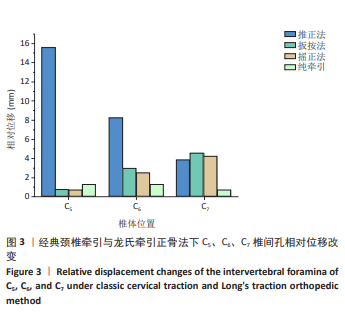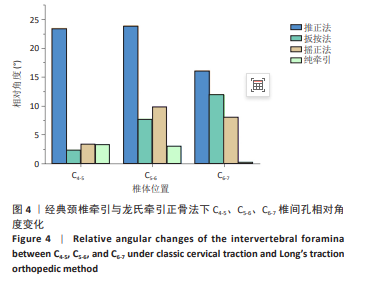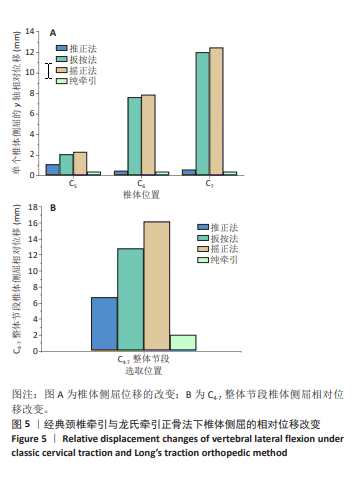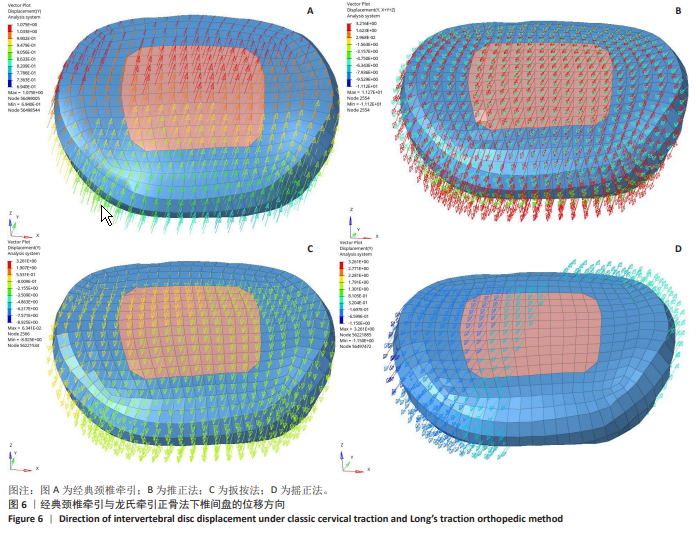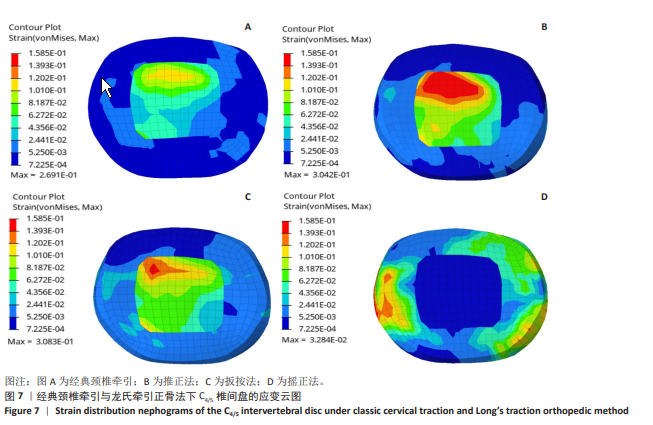[1] YAO S, OUYANG B, LU T, et al. Treatment of cervical spondylotic radiculopathy with posterior percutaneous endoscopic cervical discectomy: Short-term outcomes of 24 cases. Medicine. 2020;99(20): e20216.
[2] ZHANG Y, DONG L, ZHANG Y, et al. The effects of modified Guizhi plus Gegen decoction combined with the blade needle therapy on TCM syndromes, cervical curvature and levels of inflammatory factors in patients with cervical spondylotic radiculopathy. Am J Transl Res. 2023;15(8):5347-5355.
[3] WANG C, GU Z, YU J, et al. Clinical observation of Long chiropractic treatment on patients with neurogenic cervical spondylosis: Study protocol for a randomized controlled trial .Medicine. 2022;101(9): e28861.
[4] SHERROD BA, DAILEY AT, MAZUR MD. Closed cervical traction techniques: moving into the 21st century. J Neurosurg Spine. 2023; 39(5):618-627.
[5] LIN T, SHANGGUAN Z, XIAO Z, et al. Whether the potential degree of cervical instability and cervical muscle degeneration in patients with cervical spondylosis radicular affect the efficacy of cervical traction. Sci Rep. 2024;14(1):20467.
[6] CHENG ZJ, ZHANG SP, GU YJ, et al. Effectiveness of Tuina Therapy Combined With Yijinjing Exercise in the Treatment of Nonspecific Chronic Neck Pain: A Randomized Clinical Trial. JAMA Netw Open. 2022;5(12):e2246538.
[7] KANG D, YIM J. A Study of 45 Patients with Chronic Neck Pain to Compare the Effects on Pain and Disability of 4 Weeks of Physical Therapy with the Active Release Technique and Strain-Counterstrain Manipulation with Massage Alone, Before and After Treatment. Med Sci Monit. 2023;29:e942027.
[8] TU TH, WANG CY, CHEN YC, et al. Multilevel cervical disc arthroplasty: a review of optimal surgical management and future directions. J Neurosurg Spine. 2023;38(3):372-381.
[9] 李德成,张彦敏,高冕,等.龙氏整脊疗法配合简易牵引治疗寰枢关节半脱位的临床疗效观察[J/OL].河北医药,1-4[2025-03-12].https://kns-cnki-net.webvpn.gzarts.edu.cn/kcms/detail/13.1090.r.20231215.1409.002.html.
[10] 张其云, 赵永华, 陈亚锋. 龙氏牵引下正骨法治疗神经根型颈椎病的临床观察[J]. 河北中医,2019,41(7):1072-1075.
[11] 欧志文. 龙氏牵引下正骨法治疗退行性下颈椎失稳症的临床观察[D]. 广州:广州中医药大学,2021.
[12] LV G, CHEN X, WU H, et al. Finite element analysis of the use of two new types of internal fixation for acetabular fractures . J Orthop Surg Res. 2023;18(1):841.
[13] LIANG Z, MO F, ZHENG Z, et al. Quantitative cervical spine injury responses in whiplash loading with a numerical method of natural neural reflex consideration. Comput Methods Programs Biomed. 2022;219:106761.
[14] PANJABI MM, CHEN NC, SHIN EK, et al. The Cortical Shell Architecture of Human Cervical Vertebral Bodies. Spine. 2001;26(22):2478-2484.
[15] PANZER MB, CRONIN DS. C4-C5 segment finite element model development, validation, and load-sharing investigation. J Biomech. 2009;42(4):480-490.
[16] ÖSTH J, BROLIN K, SVENSSON MY, et al. A Female Ligamentous Cervical Spine Finite Element Model Validated for Physiological Loads. J Biomech Eng. 2016;138(6):061005.
[17] SHEN TWD. Investigation of Whiplash Associated Disorders using Finite Element Neck Models with Active Musculature in Frontal, Rear and Lateral Impact. University of Waterloo, 2020.
[18] LIU YT, DONG RC, LIU Z, et al. Finite element analysis of the cervical spine: dynamic characteristics and material property sensitivity study. Comput Methods Biomech Biomed Engin. 2024;1-15. doi: 10.1080/10255842.2024.2304285.
[19] ÖSTH J, BROLIN K, CARLSSON S, et al. The occupant response to autonomous braking: a modeling approach that accounts for active musculature. Traffic Inj Prev. 2012;13(3):265-277.
[20] CORRALES MA, CRONIN DS. Sex, age and stature affects neck biomechanical responses in frontal and rear impacts assessed using finite element head and neck models. Front Bioeng Biotechnol. 2021:9:681134.
[21] 李婵, 李娟, 毛志涛, 等. 龙氏牵引下正骨法治疗颈源性肩周炎的临床疗效观察[J]. 广州中医药大学学报,2023,40(9):2225-2230.
[22] 范德辉, 龙层花. 龙氏治脊疗法[M]. 广州: 广东科技出版社,2019.
[23] SINGHAL I, HARINATHAN B, WARRAICH A, et al. Finite element modeling of the human cervical spinal cord and its applications: A systematic review . N Am Spine Soc J. 2023;15:100246.
[24] HAN C, FENG M, WEN H, et al. Rotation-traction manipulation induced intradiskal pressure changes in cervical spine-an in vitro study . Front Bioeng Biotechnol. 2024;12:1322212.
[25] LIN D, HE Z, WENG R, et al. Comparison of biomechanical parameters of two Chinese cervical spine rotation manipulations based on motion capture and finite element analysis. Front Bioeng Biotechnol. 2023;11: 1195583.
[26] HUANG X, YE L, WU Z, et al. Biomechanical Effects of Lateral Bending Position on Performing Cervical Spinal Manipulation for Cervical Disc Herniation: A Three-Dimensional Finite Element Analysis. Evid Based Complement Alternat Med. 2018;2018:2798396.
[27] FOURNELY M, PETIT Y, WAGNAC E, et al. Effect of experimental, morphological and mechanical factors on the murine spinal cord subjected to transverse contusion: A finite element study. PLoS One. 2020;15(5):e0232975.
[28] FRANTSUZOV R, MONDAL S, WALSH CM, et al. A finite element model of contusion spinal cord injury in rodents. J Mech Behav Biomed Mater. 2023;142:105856.
[29] SHEA M, EDWARDS WT, WHITE AA, et al. Variations of stiffness and strength along the human cervical spine. J Biomech. 1991;24(2):95-107.
[30] NIGHTINGALE RW, WINKELSTEIN BA, KNAUB KE, et al. Comparative strengths and structural properties of the upper and lower cervical spine in flexion and extension. J Biomech. 2002;35(6):725-732.
[31] WHEELDON JA, PINTAR FA, KNOWLES S, et al. Experimental flexion/extension data corridors for validation of finite element models of the young, normal cervical spine. J Biomech. 2006;39(2):375-380.
[32] MANICKAM PS, ROY S. The biomechanical study of cervical spine: A Finite Element Analysis. Int J Artif Organs. 2022;45(1):89-95.
[33] VASAVADA AN, DANARAJ J, SIEGMUND GP. Head and neck anthropometry, vertebral geometry and neck strength in height-matched men and women. J Biomech. 2008;41(1):114-121.
[34] BEAUSéJOUR MH, PETIT Y, WAGNAC É, et al. Cervical spine injury response to direct rear head impact. Clin Biomech (Bristol). 2022;92: 105552.
[35] WANG X, JIN Z, FENG T, et al. The immediate effect of cervical rotation-traction manipulation on cervical paravertebral soft tissue: a study using soft tissue tension cloud chart technology. BMC Musculoskelet Disord. 2024;25(1):184.
[36] ZEHRA U, TRYFONIDOU M, IATRIDIS JC, et al. Mechanisms and clinical implications of intervertebral disc calcification. Nat Rev Rheumatol. 2022;18(6):352-362.
[37] ROESCH ZK, TADI P. Anatomy, Head and Neck, Neck. StatPearls Publishing, 2024.
[38] WANG H, LI N, HUANG H, et al. Biomechanical effect of intervertebral disc degeneration on the lower lumbar spine . Comput Methods Biomech Biomed Engin. 2023;26(14):1669-1677.
[39] FAKHOURY J, DOWLING TJ. Cervical Degenerative Disc Disease. StatPearls Publishing, 2024.
[40] 孙金水, 李云, 刘金鹏. 龙氏正骨牵引椅治疗颈椎病疗效的观察[J] 当代医学,2016,22(33):40-41.
|
